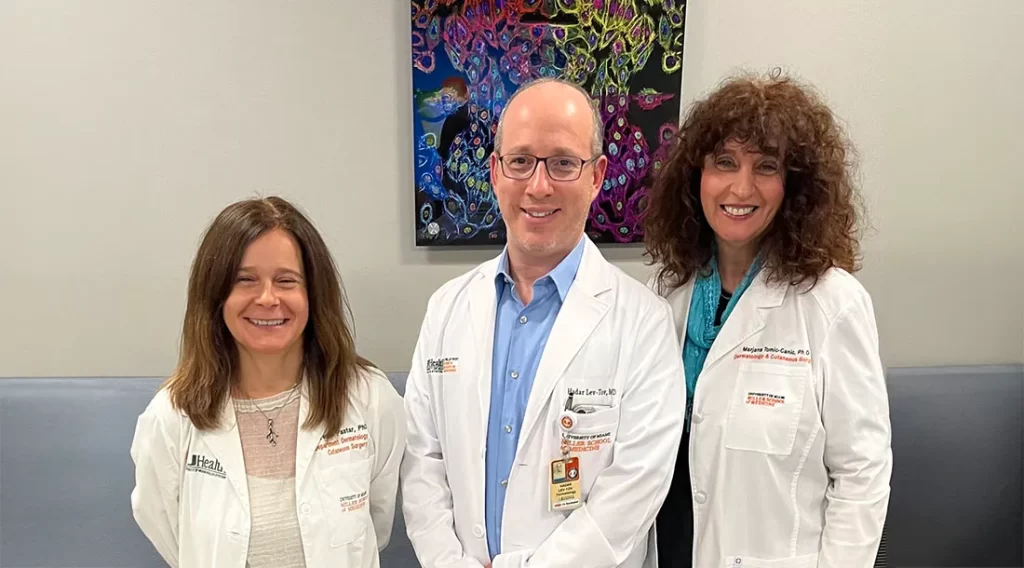Researchers from the Dr. Phillip Frost Department of Dermatology and Cutaneous Surgery at the University of Miami Miller School of Medicine scored a five-year, $2.2 million RO1 grant from the National Institutes of Health (NIH) for a translational study of hidradenitis suppurativa (HS).
The research study is led by:
- Marjana Tomic-Canic, PhD,the William H. Eaglstein, M.D., Chair in Wound Healing, vice chair of research, director of the Wound Healing and Regenerative Medicine Research Program and professor in the Dr. Phillip Frost Department of Dermatology and Cutaneous Surgery at the Miller School
- Irena Pastar, PhD,research professor in the Dr. Phillip Frost Department of Dermatology and Cutaneous Surgery at the Miller School
- Hadar Lev-Tov, MD,associate professor in the Dr. Phillip Frost Department of Dermatology and Cutaneous Surgery at the Miller School
The First Human Model of HS
One challenge in researching HS: it’s exclusively a human condition. With no animal models, researchers can’t recreate HS and test different therapies.
“That’s one part of why this grant is important,” said Dr. Tomic-Canic, whose team has developed the first human model of the disease, in a news release. “We dissect the tunnel to grow human cells in the laboratory and then reconstruct the tunnel structure in a three-dimensional human model.”
The team will use the model to study what happens in the later stages of HS.
“The cells for HS tunnels retain a unique pathology similar to what is observed in patients,” Dr. Pastar adds. “This is even more evident in the 3D model we optimized. Once we know more about the HS tunnel structures on the gene expression level, we will be able to design novel, targeted therapies.”
The research team is part of the HS Center and wound healing and regenerative research program at the Miller School.
“HS is a cross between a wound and an inflammatory disease. The wound is deep inside your tissue, not on the surface of your skin,” says Dr. Tomic-Canic. “We are looking at what makes the HS tunnels, how they form, in terms of biology and pathology, and how can we mimic their existence so we can learn to treat and to prevent HS.”


